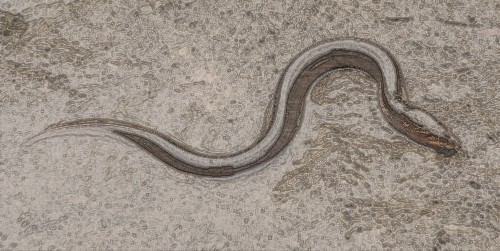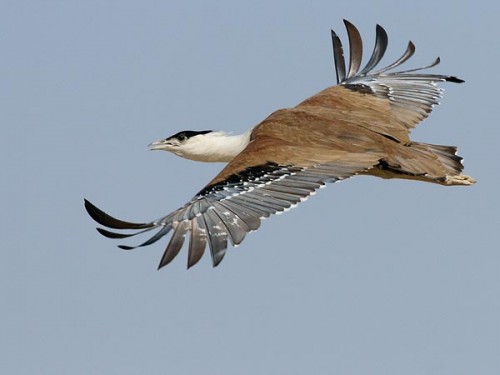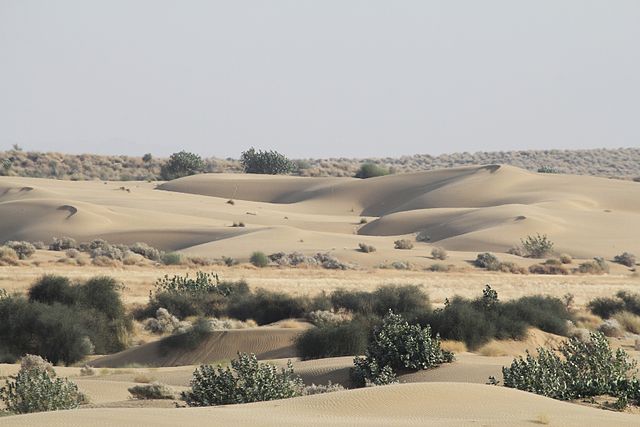NEW SIGHTING: Isn’t it a great irony that the Great Indian Bustard (Ardeotis nigriceps), which was once a proposed candidate for the title of ‘National Bird of India’, stands today on the throes of extinction? As the new IUCN Red List of Threatened Species once again tags this magnificent bird as Critically Endangered (CR), sightings in new areas of Maharashtra in Western India, assure that all is not lost.
The presence of the Great Indian Bustard, a critically endangered species, in two rural tehsils of Maharastra, has impelled forest authorities into tracking the movement of these birds using electronic surveillance; with a view to protecting the precious few that remain of the species.
In all there are only 45 numbers of the species that have been recorded in the state and eleven of them have chosen to make the tehsil of Warora-Bhadrawati their home. Most of them are found in Nanaj in Solapur district which has been acknowledged as the habitat for this uncommon species.
What makes the effort challenging is that the birds have chosen their abode in rural areas that do not fall within the jurisdiction of the forest department.
“The basic problem in protection of these birds here is that the area they have opted as their habitat does not come under the jurisdiction of forest department but lies in rural parts. We have taken up massive awareness programme in the villages around to protect these birds. If their habitat was in any of our forest areas, the task of protecting them would have been more convenient,” Divisional Forest Officer N D Choudhary said.
The forest officials are keen to do a good job of trying to protect the critically endangered species and are not publicising the issue knowing that these shy birds do not like human presence.
The Great Indian Bustard Protection Committees have been set up in villages which have become its habitat. The committee members track and keep tabs on their number every month.
“All possible efforts to track their movement with the help of electronic gadgets is underway. Eleven of these birds have been spotted in Warora-Bhadrawati tehsils and our concern is that people ignorant of these endangered species could create disturbance in the area, thus derailing the process,” Mr. Choudhary said.
The Great Indian Bustards breed mostly during the monsoon season when females lay a single egg in nests situated on open grounds. They prefer arid and semi-arid grasslands to irrigated land. Once the breeding season is over, it is difficult to keep a track of these birds and their whereabouts through the rest of the year is unknown. By attaching electronic devices to two of the eleven birds the forest officials hope it will be possible to track their movements and gain more information about their life.
“Great Indian Bustards stay here between July and October. However, their location during the rest of the year is unknown. By radio collaring two, we hope to learn more about these birds,” said ND Choudhary.
The forest officials have obtained the permission from the state government and have sought the help of the Wild-life Institute of India in radio-collaring the birds.
Species Trivia
The Great Indian Bustard is one of the largest flying bird species found in the world today. Standing a meter above the ground, and weighing up to 15 kg, this Critically Endangered terrestrial bird was once extensive across the grasslands of India and Pakistan, but today is restricted to small fragmented patches within India. Today their population is estimated at less than 250 individuals scattered across the grasslands of Rajasthan, Gujarat, Maharashtra, Andhra Pradesh, Karnataka and Madhya Pradesh. Some birds are found in Pakistan mainly in summer.
The bird can easily be identified by its black crown on the forehead contrasting with the pale neck and head. The body is brownish and the wings are marked with black, brown and grey. Males and females generally grow to the same height and weight but males have larger black crowns and a black band across the breast.
The most interesting aspect about these birds is the gular pouch right below the tongue in males. This is used to produce a resonant booming mating call to attract females and can be heard up to a distance of 500 meters. The booming call is what gives these birds the name “hoom” in the local language in Maharashtra.
Challenges
Despite having an inherent ability to survive in hostile environs, their population has reduced by 90% owing to loss of habitat and poaching. The grasslands they inhabit have been converted into agricultural land and many have now turned to roads, resulting in fragmentation of their homes. They are still hunted for sport and meat though they are protected under Indian law.
A number of Protected Areas have also been set up in across its distribution range to implement conservation measures to protect this magnificent bird. Among them are Naliya (Gujarat), Rollapadu (Andhra Pradesh) and Desert National Park (Rajasthan).
But their survival depends largely on the survival of grasslands and least interference from humans. If new habitats chosen by the bird itself remain intact, there might still be time to save this Indian bird.
More Related Stories,
A Birder’s Paradise: Bharatpur Bird sanctuary
New Bird Discovered in Andaman & Nicobar Islands
From the Camera of a 7 Year Old!
Image via cc/Flickr by Madhukar Bangalore











3 thoughts on “Critically Endangered Great Indian Bustard Spotted in New Habitats”